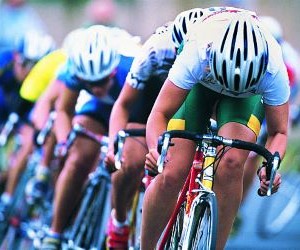Learn how to deal with punctures on long rides with prevention tips, repair techniques, and smart gear choices to keep rolling without stress.
HOW DO I MENTALLY PREPARE FOR SOLO RIDES?
Solo rides test not only physical endurance but also mental resilience. Unlike group rides, where drafting and camaraderie ease the burden, cycling alone demands self-reliance, motivation, and sharp mental strategies. This article explains how to prepare mentally for long solo sessions—covering goal setting, mindfulness, safety planning, and mindset techniques. With the right approach, riding solo becomes a training advantage, strengthening both confidence and cycling performance.

Building the right mindset
Cycling solo requires a different psychological framework compared to group sessions. Riders often face boredom, negative self-talk, or the temptation to cut rides short. Developing mental resilience before rolling out makes the difference between an abandoned session and a successful workout.
Goal setting is the foundation. Instead of treating a solo ride as a monotonous grind, cyclists should approach it with specific objectives. Goals can be performance-based, like holding a steady cadence, or mental, such as practicing focus for extended stretches. Clear goals transform solo training into purposeful missions.
Key mindset strategies for solo rides
Set intentions: Define what success looks like before leaving home.
Break down distance: Divide long rides into manageable mental segments.
Use visualization: Picture smooth pedaling and steady rhythm before and during the ride.
Reframe solitude: Treat the absence of company as an opportunity for self-discovery.
Riders must also confront negative inner dialogue. Solo rides amplify doubts—“I should turn back” or “I can’t hold this pace.” Practicing self-compassion and positive affirmations turns these moments into training for mental toughness. Over time, this builds confidence not just for solo riding, but for competitive situations where focus under stress is critical.
Ultimately, mindset preparation transforms solitude from a liability into a strength. A prepared mind views the solo ride not as isolation but as a chance to sharpen self-reliance and discipline.
Practical techniques to stay engaged
Beyond mental framing, practical tools help riders remain engaged during solo efforts. Monotony is a major challenge, particularly on long endurance rides. Using structured techniques keeps focus sharp and prevents performance drift.
One effective method is interval-based distraction. Even during endurance rides, adding small challenges—like alternating cadence every five minutes or inserting micro-sprints—creates mental checkpoints. This turns a three-hour ride into a series of manageable efforts rather than one endless stretch.
Engagement strategies during solo cycling
Podcasts and audiobooks: Stimulate the mind while maintaining steady effort.
Mindful riding: Focus deliberately on breathing, pedal strokes, or body posture.
Music playlists: Use rhythm to set cadence and maintain motivation.
Route variation: Explore new roads or trails to keep rides fresh and exciting.
Another tool is mindfulness. Instead of distracting from the ride, mindfulness brings attention inward—toward sensations, environment, and rhythm. This technique reduces stress and enhances the meditative quality of solo cycling, turning it into both a physical and mental reset.
Safety planning also supports mental focus. Knowing that your route, gear, and communication are secure removes underlying anxiety. Carrying essentials like ID, cash, and a phone ensures peace of mind, which helps concentration stay on performance rather than worry.
Finally, cyclists should allow flexibility. Solo rides often reveal energy swings or mental dips. Having strategies like shortening a loop, adjusting pace, or adding a recovery break makes the ride sustainable without guilt, while still fulfilling its training purpose.
Turning solitude into strength
The greatest benefit of solo riding lies in the opportunity to cultivate resilience. Without the external motivation of a group, cyclists must generate internal drive. Over time, this habit of self-reliance strengthens confidence, adaptability, and independence—skills that translate directly to racing and life beyond the bike.
Solo rides also provide space for creativity and reflection. Many athletes report breakthroughs in problem-solving or stress relief during long, quiet efforts. Instead of battling silence, embracing it transforms riding into a meditative practice with psychological benefits extending well beyond fitness.
Benefits of embracing solo cycling
Mental resilience: Builds capacity to push through discomfort without external support.
Independence: Strengthens self-reliance in training and racing contexts.
Creativity: Fosters reflection and problem-solving away from daily noise.
Confidence: Increases belief in one’s ability to sustain efforts alone.
Periodically scheduling solo rides also makes group rides more rewarding. The contrast highlights the value of teamwork while reinforcing that progress is not dependent on external validation. Riders who master both solo and group contexts become more adaptable, versatile, and mentally prepared for any scenario.
In the end, solitude becomes a training partner rather than an obstacle. The mental strength developed in solo sessions often exceeds the physical gains, creating well-rounded cyclists who thrive in any environment.
The lesson is clear: solo rides are not only about covering distance but about cultivating a mindset that turns isolation into empowerment. Mental preparation ensures these rides build both strength and self-confidence, shaping cyclists into resilient athletes ready for any challenge.
YOU MAY ALSO BE INTERESTED






